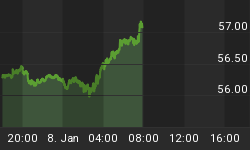Well, believe it or not, we are through with the first half of 2005. Markets in general have not been kind, with the major US equity indexes all in the red for the first six months of the year. Bonds on the other hand at least managed to stay comfortably positive, showing capital gains in addition to the customary coupon payments. There were certainly some bright sectors, such as the oil-patch and Google stock, but not nearly enough to keep the average mutual fund, hedge fund, or indexed portfolio in the profitable column. We had close to 4% economic growth in the first quarter in the US along with double digit profit growth in the stock market and ongoing double digit appreciation in the housing market, but waning momentum and rising short term rates kept equities in check. Meanwhile the Fed has reiterated in no uncertain terms that after raising the Fed Funds rate for the 9th consecutive time last week, they plan to do the same for the 10th, 11th and possibly a few more FOMC meetings after that. The bond market rallied with joy following the latest hawkish (i.e. tough) missive from the Fed on Thursday only to turn around and give up all its Thursday gains and more on Friday. The Fed has a scary history of not seeing bubbles and recessions in the making until 6-12 months after they have burst/started. The new reality that the investment world is faced with is that with the Fed Funds - Long Bond spread treading at 100 and shrinking, the easy money carry trade is all but gone. Ask all those smart ex-hedge fund guys if you don't believe me. So every time all you little investors out there see the bond market rally now with stocks selling off, perhaps it is time to get out the old economic dictionary and review such ugly concepts as recession, depression, default, deflation, double digit unemployment, rising real rates, post-bubble hangover, etc.
NOTEWORTHY: The economic release calendar was light again last week. The highlight was the well advertised 25 basis point rate hike to 3.25% by the Fed. As mentioned above, the statement that accompanied the rate hike indicated that according to the Fed, neutrality has not yet been reached and therefore further increases are expected. The mainstream economist community was happy to see that most indicators last week were mildly positive. Consumer and manufacturing surveys topped expectations, inflation continues to be well behaved, the employment scene is decent and cars are still selling like hot-cakes. Next week's highlight will be the monthly employment report. After last month's disappointing data, a substantially weaker than consensus (192k) payroll number will have rather ominous implications. The monthly employment figures will also be released in Canada on Friday. The Canadian data has been on the strong side for the past few months, so a weaker than expected number will have lesser implications.
INFLUENCES: Fixed income portfolio managers are becoming less bearish. (RT survey rose to another multi-month high reading of 46% bulls - up a point - over the latest week. This metric is now into neutral territory from a contrarian perspective.) The 'smart money' commercials are long 192k contracts (a slight decrease from last week's 216k). This number is becoming slightly positive again for bonds. Seasonals are neutral and choppy heading into July. Bonds treaded water until Friday, when the market sold off again. On the technical front, bonds still have a positive bias, but the market seems to be taking 3 steps forward and 2 steps back.
RATES: US Long Bond futures closed at 117-20, down $1.3 this week, while the yield on the US 10-year note rose 13 basis points to 4.05%. The market seems to be settling into a trading range around the 4% level on the US 10 year note. The Canada - US 10 year spread was wider by 3 to -20 basis points. We are officially neutral on this spread at this point. The belly of the Canadian curve outperformed the wings by another 2 basis points last week and held the break through the 40 bps level. Selling Canada 3.25% 12/2006 and Canada 5.75% 6/2033 to buy Canada 5.25% 6/2012 was at a pick-up of 39 basis points. Assuming an unchanged curve, considering a 3-month time horizon, the total return (including roll-down) for the Canada bond maturing in 2012 is the best value on the curve. In the long end, the Canada 8% bonds maturing on June 1, 2023 continue to be cheap on a relative basis.
CORPORATES: Corporate bond spreads continued to hold their positive tone into month-, quarter-, and half-year-end in Canada. That is not quite the same in the US. The new issue tap down south was wide open through most part of June. Long TransCanada Pipeline bonds were unchanged at 123, while long Ontario bonds were in .5 to 46.5. A starter short in TRAPs was recommended at 102 in February 2004. Corporates have been narrowing for the past few weeks, but I believe they are close to ending this trend. Shorter maturity, quality corporates should be favoured over lower rated issues as I believe corporate spreads will continue to be under pressure. Any credit that is connected with the consumer and discretionary spending should be avoided. As a new recommendation we advise to sell 10 year Canadian Bank sub-debt at a spread of 58 bps over the 10 year Canada bond. MBNA bank paper would have been an excellent candidate; unfortunately (or fortunately??) they were acquired by BofA last week. The flattening yield curve is a huge negative factor for financials.
BOTTOM LINE: Neutral continues to be the operative word on bonds. An overweight position in the belly of the curve is still recommended for Canadian accounts. Short exposure for the corporate sector is advised. We are recommending an increase in short corporate exposure this week.
















